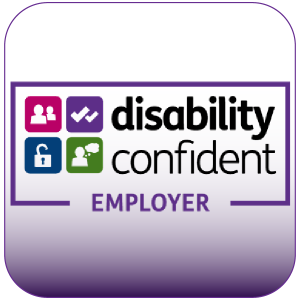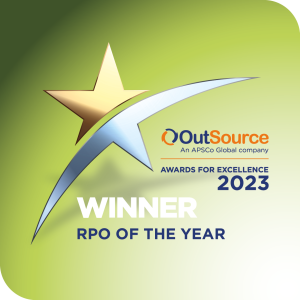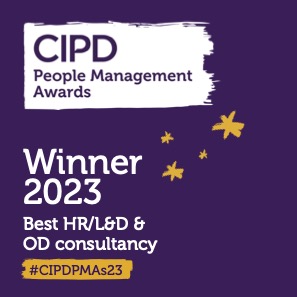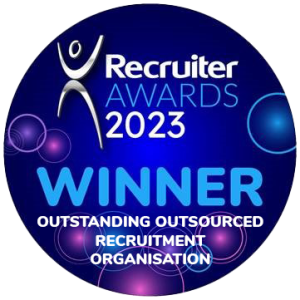The case for equity, diversity and inclusion (EDI) in the workplace is undisputed. Numerous studies point to the benefits of EDI, and the evidence is that it makes an organisation happier, healthier and wealthier, with recruitment and retention also positively impacted.
If you want to improve your recruitment and retention, here’s why you should be making EDI a priority.
Background
The three individual terms are:
- Equity – ensuring that people are treated with fairness, regardless of their protected characteristics.
- Diversity – recognising and respecting the differences in other people.
- Inclusion – creating the kind of environment where everyone feels welcome and valued.
The Equality Act 2010 protects people from discrimination on the grounds of age, disability, sex, race, religion, and sexual orientation amongst other characteristics, and makes it illegal to discriminate against someone on the basis of these factors.
Many organisations have implemented EDI programmes to address issues such as racism, sexism and ableism, as well as to encourage people from different socioeconomic backgrounds to join them. And those organisations are seeing the dividends.
A 2020 McKinsey report found that the greater the representation, the higher the likelihood of outperformance. Companies with more than 30% women executives were more likely to outperform companies where this percentage was between 1-30%, and in turn these companies were more likely to outperform those with even fewer women executives, or none at all.
However, there are still disparities that need to be addressed:
- Only 66% of people from all ethnic groups combined were employed in the UK, compared to 78% of white people.
- The employment rate for women stood at 72.2% (October to December 2021) compared to 78.8% for men.
- The employment rate for disabled people was 52.7% in Q2 2021, compared to 81.0% for non-disabled people.
What can employers do?
An effective EDI programme starts with an organisation’s recruitment strategy. Issues such as flexible working and employer brand development are great places to start, but before people are even employed, it’s important to examine how organisations attract candidates and how they deal with the selection process.
Careers pages and job advertisements
Your careers website or one of your job ads may be the first time a potential employee interacts with your organisation. If you’re using exclusive rather than inclusive language or imagery, it may alienate the very person you so desperately need to join your team.
Words like ‘ambitious’, ‘decisive’ and ‘self-confident’ are masculine-coded words, while ‘considerate’, ‘pleasant’ and ‘sympathetic’ are feminine-coded – and research shows that many women are put off by masculine-coded words when applying for jobs.
Aim for gender-neutral words which focus more on the job description rather than the personal qualities of the person doing the job. It is also worth being aware of using technical jargon in your job ads; this can be off-putting for diverse and entry-level candidates and those from less privileged backgrounds.
Many organisations now include an EDI statement on both their careers page and in their job ads – it’s a great place to explain why you are committed to greater diversity and inclusion, and to attract candidates to whom that matters.
Where to advertise and source
If your current recruitment process brings back the same results time after time, it’s time to widen your search. Think about where you are advertising and search for talent and ask whether it’s working in terms of EDI. Traditionally hiring managers lack the resources to look for diverse candidates, so consider partnering with a talent provider that is experienced in specialised searches and who’s not afraid to take a new approach to finding you the perfect candidate.
Inclusive selection
It’s hard to think of any process that has more impact on the diversity and inclusion of the organisation than selection. If your selection processes are not inclusive of diverse ranges of individuals, then you will hugely limit the talent pool entering the organisation.
Ensure that the criteria against which people are assessed for a role are, objectively, related to performance. Structured assessment processes, that can objectively evaluate the potential of someone to perform well in role, are always based on understanding the attributes that are predictive of success. Running formal job analysis will allow you to identify what these criteria are and to remove criteria that act as barriers, keeping out candidates, often having an adverse impact on particular groups.
When you know what you are looking to measure, the next stage is to develop a process that creates the objective measures upon which decisions can be made. Identifying where bias may creep into a selection process and mitigating this is essential. For example, using interview panels, rather than individual interviewers, ensures that decisions will not be made on one person’s unconscious biases.
Technology can be well employed in assessment processes, to support human interactions, for example. However, do not fall into the trap of thinking that by removing the human from the decision you are removing human biases. One of the biggest challenges facing the rec-tech industry at the moment is in removing bias from AI decision making; be rigorous of your assessment of any technology that you are intending to implement in your assessment process.
Training
Inclusive hiring is underpinned by inclusive attraction and assessment processes – all the diversity training in the world, in isolation, will not solve the problem.
However, for inclusive processes to work, those involved need to understand them, and be aware of the importance of objectivity and the impact their own innate biases can have on their decision making.
The purpose of well-designed, inclusive recruitment training is not to remove peoples’ biases. Be very cautious of any course offering such ambitions, but to make people aware of where there may be a risk of bias and seek to identify ways to mitigate it. Well-designed and engaging training can have a huge impact on increasing objectivity in decision making, but also in driving advocacy for more inclusive recruitment.
How does your organisation stack up?
To help you think about how effective your resourcing processes are from a diversity and inclusion perspective, you can take Omni’s free diversity and inclusion resourcing effectiveness report. Simply answer some key questions and instantly receive a report that identifies your strengths and areas for development.
Alternatively, to speak to one of Omni’s Resourcing Transformation experts who specialise in inclusive attraction, assessment and selection, or hiring manager training.
Get in touch today and find out how you can cast your net wider without lowering your expectations.




